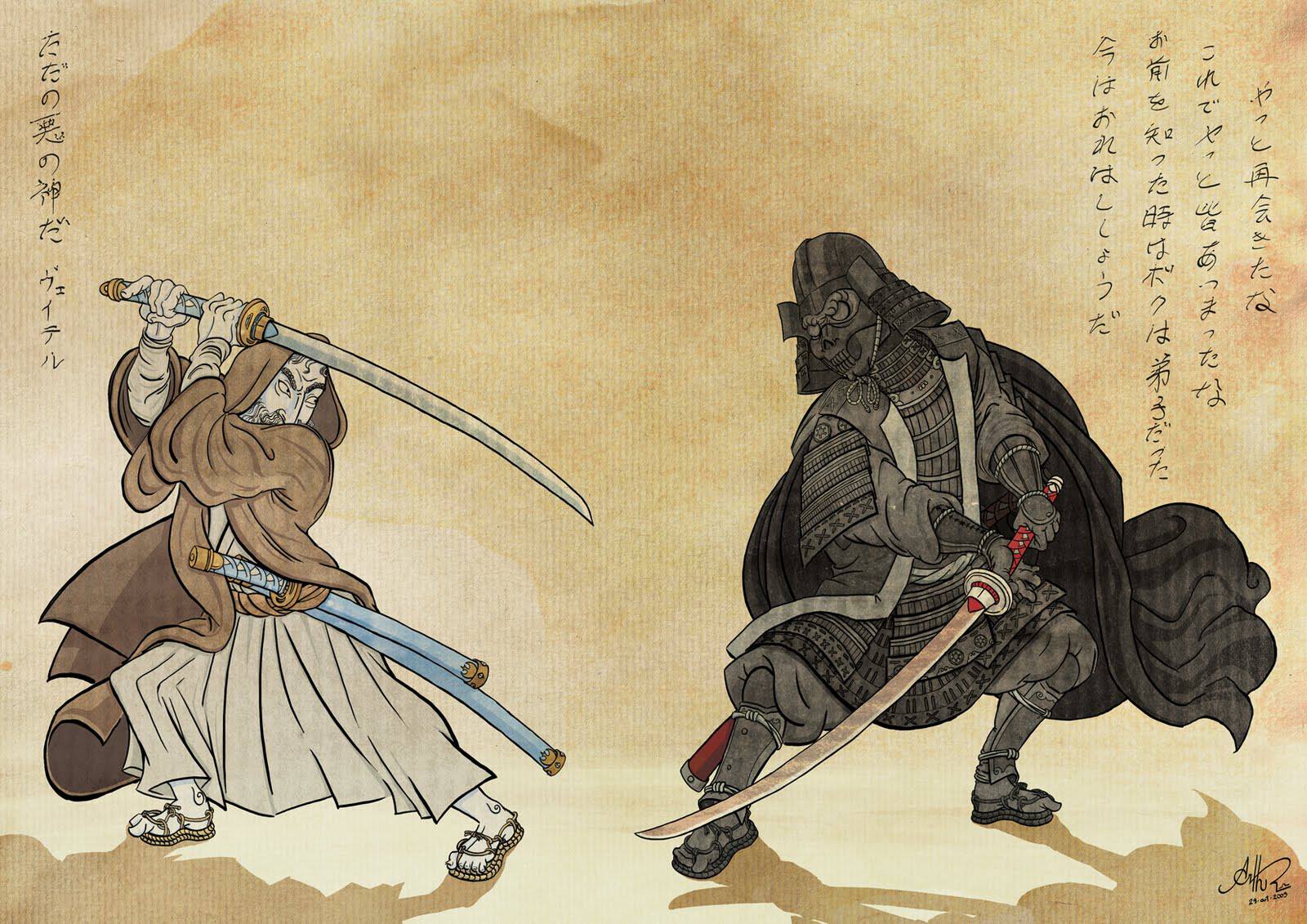Step into the mysterious world of Japan’s samurai. You’ve heard of Miyamoto Musashi and Oda Nobunaga, but what about the other amazing warriors whose names we’ve forgotten? We’re going to travel back in time to meet these hidden heroes, from the battlefield to the tea ceremony. Get ready for a thrilling journey through the hidden history of Japan’s samurai, where you’ll discover the true meaning of bravery, strategy, and loyalty.
Legends of the Battlefield: Unveiling Japan’s Famous Samurai
The world of the samurai. It’s a place full of powerful stories, epic battles, and legendary warriors. These weren’t just swordsmen; they were the heart and soul of feudal Japan, shaping their nation’s history with their incredible skills, unwavering loyalty, and deep wisdom. Bound by a strict code of honor, their stories continue to capture our imaginations even today. Let’s dive in and meet a few of these fascinating figures!
Miyamoto Musashi: The Undefeated Swordsman
You can’t talk about famous samurai without mentioning Miyamoto Musashi. This guy was a legend – a master swordsman who fought in over 60 duels and walked away undefeated. But he wasn’t just a skilled warrior; Musashi was a deep thinker who wrote “The Book of Five Rings.” This book is like a window into his mind, full of strategies for sword fighting and life in general. Even today, people still read it to learn about swordsmanship, strategy, and finding their own inner strength.
Date Masamune: The One-Eyed Dragon
Then there’s Date Masamune, instantly recognizable with his badass crescent-moon helmet. Masamune was a brilliant military leader who wasn’t afraid to try new things on the battlefield, known for his innovative tactics and his ability to outsmart his enemies. Some historians even suggest that he had his sights set on conquering far more than Japan! That ambition, along with his unique appearance, earned him the nickname “The One-Eyed Dragon.”
The Women of the Samurai World
Don’t think for a second that the world of the samurai was just for men. There were some amazing women who broke the mold and became warriors in their own right. Tomoe Gozen, for example, was a total badass who fought right alongside the men in the Genpei War. She was known for her incredible skills as an archer and a swordswoman, and her courage in battle became the stuff of legends.
Yasuke: The African Samurai
And then there’s the incredible story of Yasuke. He was an African man who arrived in Japan as a slave but rose through the ranks to become a samurai under Oda Nobunaga, one of the most powerful warlords of the time. Yasuke’s story challenges everything we thought we knew about samurai identity, proving that courage and skill could be found in the most unexpected places.
The Three Great Unifiers: Forging a Nation
No talk about samurai would be complete without mentioning the big three – Oda Nobunaga, Toyotomi Hideyoshi, and Tokugawa Ieyasu. These guys were like the architects of a unified Japan, each playing a crucial role in bringing the country together.
- Oda Nobunaga was a ruthless and ambitious warlord who started laying the groundwork for unification. Think of him as the one who broke down the old systems to make way for something new.
- Toyotomi Hideyoshi, a brilliant strategist and administrator, picked up where Nobunaga left off, expanding his conquests and strengthening his hold on the land.
- Tokugawa Ieyasu was the final piece of the puzzle. This military genius established the Tokugawa shogunate, which brought in an era of peace and stability that lasted for centuries.
Bushido: The Way of the Warrior
Holding all these warriors together was Bushido, the samurai code of honor. Think of it as a set of unwritten rules that guided their lives, on and off the battlefield. Bushido was all about loyalty to your lord, facing danger with courage, showing compassion to those weaker than you, and always being truthful. It was a way of life, and the samurai strived to live by its principles every single day.
The Enduring Legacy of the Samurai
The impact of the samurai on Japanese culture is undeniable. Their stories, their code of honor, their dedication to their craft – it’s all woven into the fabric of Japan. From epic tales passed down through generations to modern-day movies and TV shows, the samurai continue to capture our imaginations. And even today, the principles of Bushido inspire people around the world to live with honor, discipline, and a commitment to something larger than themselves.
Who is the most famous samurai?
So, we’ve talked about samurai and their impact on Japan, but who takes the crown for the most famous? Well, it’s not as easy as picking a name out of a hat. You see, a samurai’s fame could come from different things: being a total beast on the battlefield, being a political mastermind, or even just having a lasting impact on Japanese culture.
Let’s start with a name you might recognize: Miyamoto Musashi. This guy was a legend, a swordsman who never lost a duel. He even wrote the book on strategy, literally – it’s called The Book of Five Rings, and people still study it today. Oh, and did I mention he fought with two swords at once? Talk about a badass.
Next up, we have Oda Nobunaga, a powerful warlord who was instrumental in bringing Japan together under one banner. He wasn’t afraid to make tough calls, even if it meant being ruthless, and his military strategies were ahead of their time.
Then there’s Toyotomi Hideyoshi, Nobunaga’s successor. He finished what Nobunaga started and finally unified Japan. He wasn’t just a military man, though; he was also a savvy administrator who knew how to keep things running smoothly.
And finally, we come to Tokugawa Ieyasu, the founder of the Tokugawa shogunate. This shogunate was a big deal – it ruled Japan for over 250 years! Ieyasu was a shrewd politician and a brilliant military leader who managed to bring peace and stability to Japan for generations.
These are just a few of the big names that come up when we talk about famous samurai. Each of them had their own strengths and accomplishments, which makes it pretty tough to say definitively who was “the most famous.” What we can say for sure is that the samurai were a fascinating bunch who played a huge part in shaping Japanese history.
Who was the deadliest samurai?
Defining the “deadliest” samurai isn’t as simple as it might seem. It’s not just about a kill count; it’s about understanding the impact their skills, leadership, and actions had on the battlefield and in shaping the course of Japanese history.
While legendary swordsmen like Miyamoto Musashi and Itō Ittōsai achieved near mythical status for their undefeated duel records, their influence extended far beyond individual combat. They inspired generations of warriors and left an indelible mark on the art of swordsmanship.
On the other hand, figures like Oda Nobunaga, known for his aggressive tactics and ambition, revolutionized warfare in Japan. His successor, Tokugawa Ieyasu, used his strategic brilliance to usher in an era of peace after centuries of conflict. These leaders were more than just skilled swordsmen; they were military geniuses who reshaped the political landscape of Japan.
Therefore, determining the “deadliest” samurai requires a nuanced perspective. It’s about weighing the significance of their victories, the brilliance of their strategies, and the lasting impact they had on Japan’s history. It’s about recognizing that each samurai, with their unique skills and contributions, played a role in shaping the narrative of their time.
Who is the legendary samurai?
The question of who among the samurai reached legendary status is a fascinating one. These figures transcended mere historical figures to become symbols of the samurai spirit, their names whispered with reverence even today. But what were the qualities that elevated them to this esteemed position?
Legendary samurai were more than just fearsome warriors, though incredible skill in battle and mastery of strategy were undoubtedly prerequisites. They also embodied the very essence of Bushido, the samurai code of honor and loyalty. This meant living a life guided by integrity, unwavering courage, respect for authority, and an unyielding commitment to duty.
Miyamoto Musashi, with his undefeated duel record and his philosophical writings in “The Book of Five Rings,” stands tall among these legendary figures. He represents the ideal of the warrior-philosopher, a master of both the sword and the mind.
Then we have the “Three Great Unifiers” – Oda Nobunaga, Toyotomi Hideyoshi, and Tokugawa Ieyasu. These ambitious and strategic leaders reshaped the political landscape of Japan, their actions echoing through the ages. They exemplify the samurai’s capacity for leadership, ambition, and ultimately, unification.
But legendary status wasn’t reserved solely for those who excelled in warfare or politics. Kusunoki Masashige, for example, became a legend for his unwavering loyalty to the Emperor, even in the face of insurmountable odds. His story serves as a powerful reminder of the samurai’s unwavering commitment to duty and honor, even unto death.
And let’s not forget about Tomoe Gozen. As a rare female samurai who fought alongside her male counterparts, she defied societal norms and earned recognition for her exceptional skills and bravery on the battlefield. Her story challenges traditional notions of the samurai and highlights the courage and capability that existed beyond gender.
The impact of these legendary samurai extends far beyond the battlefield. Their adherence to Bushido, with its emphasis on honor, discipline, and self-cultivation, has left an undeniable mark on Japanese culture. From the refined aesthetics of traditional art forms to the enduring themes of loyalty and self-sacrifice in literature and film, the spirit of the samurai continues to resonate in modern Japan.
The stories of these legendary figures captivate us even today, reminding us of the power of courage, discipline, and unwavering commitment to one’s principles. They embody the enduring allure of the samurai, figures who transcended time to become symbols of an era, their legacy woven into the tapestry of Japanese history and culture.
Among the notable figures of Viking history, one particularly intriguing character is Freydis Eiríksdóttir, known for her daring exploits and ruthless leadership. If you are intrigued by the transatlantic voyage of Francis Tumblety, the man who was a prime suspect in the notorious Jack the Ripper case, you may find it equally captivating.
- Unlocking 2-Letter Words with U: The Definitive Guide - April 4, 2025
- Unlock Words with the Letters THREE: Top Unscramble Tools 2025 - April 4, 2025
- Master Scrabble: X & Z Words for High Scores - April 4, 2025
















